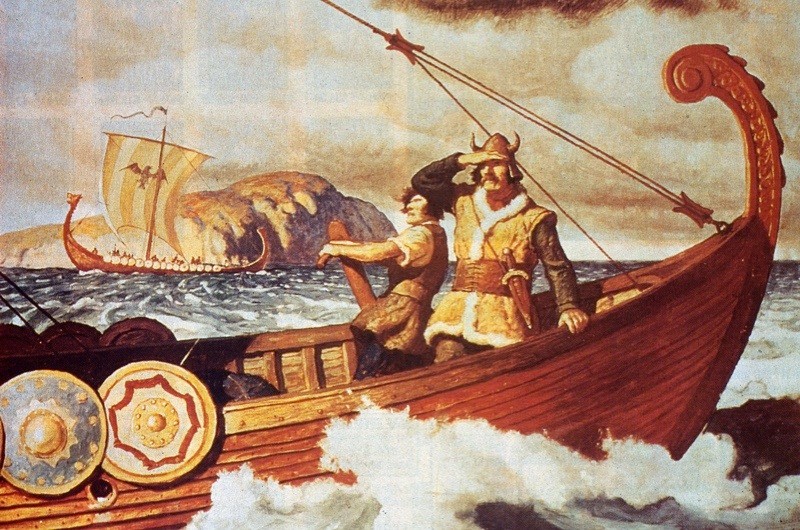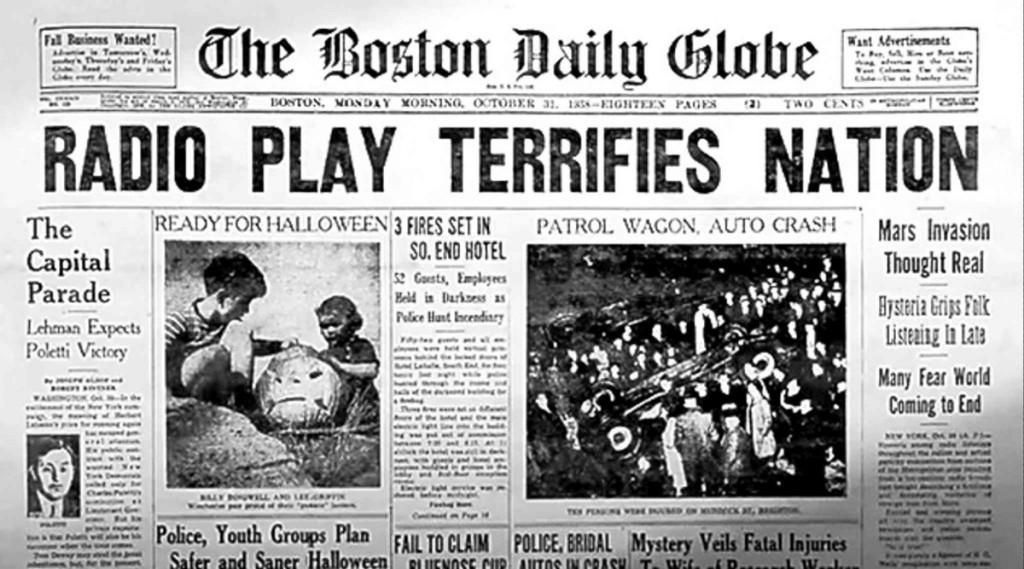If you’ve ever played the “Pass the Word” game, you know it is nearly impossible to retain the exact message until the last person in the line. In fact, even a simple sentence can be convoluted into something else between just two people.
This phenomenon is a pretty good reflection of how some elements of human history have been passed on over the decades and centuries. Many important stories have been left unwritten, and anecdotes and details are only known through centuries of word-of-mouth.
This has led to fabrications and exaggerations with no basis in fact being enshrined in books, films, and stories.
Let’s look at some of the most prevalent historical myths that many continue to believe are true and then debunk each of them.
Myth #1: Napoleon Bonaparte Was Short
You may have heard of the Napoleonic Complex, also known as Napoleon Syndrome or Short-Man Complex. It refers to the aggressive nature of individuals who are shorter in stature as a way to overcompensate for their lack of height.
The term was coined after Napoleon Bonaparte, the infamous French emperor and military commander. He became a hero during the French Revolution and became known worldwide for his successful military campaigns in the late 18th and early 19th centuries.
Bonaparte is a legend for his good and terrible deeds. He has been revered as one of the best military tacticians in history. However, he was also known for his bloody conflicts, the Napoleonic Wars.

People often described Bonaparte as a short man who loomed large. But what was his real height? According to some historians, those surrounding Bonaparte described him to be 5’2” in height, which is very short for a full-grown man.
However, the French measurements at that time were quite different. Adjusted for the modern age, Bonaparte’s height would be around 5’6” (some would say 5’7”), which is about average for a French man in the 1800s.
Bonaparte’s shortness was reportedly a product of British propaganda—after all, France and England had been at war for more than 100 years.
British cartoonist James Gillray was credited for drawing comically short Bonapartes in his caricatures. Most people had never seen Bonaparte in person, so they just assumed the French leader was short with a boastful attitude.
Myth #2: Vikings Wore Horned Helmets
If asked to describe a Viking, the most common description for many would be a large person with shaggy red or blond hair, a bushy beard, layered clothing, and a large horned helmet.
However, there is no evidence that Vikings actually wore horned helmets. In fact, it was quite impractical to wear such unwieldy headgear. And, in fact, these helmets pre-date the Scandinavian pirates. Horned helmets excavated in Viksø, Denmark, in the 1940s were believed to be from 900 Before the Common Era (BCE).

As quoted by the Smithsonian Magazine, archeologist Helle Vandkilde said, “For many years in popular culture, people associated the Viksø helmets with the Vikings. But actually, it’s nonsense. The horned theme is from the Bronze Age and is traceable back to the ancient Near East.”
Horned helmets were attributed to the Vikings because Scandinavian artist Gustav Malmström and his contemporaries portrayed the raiders that way. And for decades, the horned helmet-wearing Vikings have been a stereotype.
Myth #3: The World Is Flat
As early as 500 BCE, Pythagoras spread the notion that the Earth is round. Aristotle later concurred. Eratosthenes further developed the idea by measuring the Earth’s diameter.
The spherical Earth became widely accepted in the 15th century when Ferdinand Magellan and Juan Sebastian Elcano circumnavigated the world.
Other established proofs include:
- Gravity allows the Earth to maintain its spherical shape
- The visibility of objects on Earth’s surface
- Lunar eclipses
- Appearance of the moon
- Surface navigation
However, there is still a strong modern school of thought that the Earth is flat. This group of people, known as Flat Earthers, maintain their insistence because of their distrust of mainstream media and academics. This is paralleled by the rising dependence on social media influencers who can provide a more relatable storytelling technique to the masses.
Instead of watching CNN, BBC, or other mainstream media platforms, the masses turn to social media for information. As Dr. Jennifer Beckett of the University of Melbourne said, “YouTube becomes a content hub, Facebook becomes an administrative one-stop shop for that hub, and Twitter continually pushes out the messaging.”
It is easier than ever to only engage with content that generally agrees with your worldview. Flat Earthers only consume Flat Earth-focused YouTube videos, therefore becoming more convinced that they are correct.
Myth #4: Shah Jahan Ordered Taj Mahal Workers To Be Blinded and Maimed
The Taj Mahal is often described as the greatest symbol of love. Emperor Shah Jahan ordered the structure to be created between 1631 and 1648 to immortalize his favorite wife, Mumtaz Mahal, who died during childbirth.
The United Nations Educational, Scientific, and Cultural Organization (UNESCO) designated the Taj Mahal as a World Heritage Site for being an extraordinary architectural achievement in Indo-Islamic architecture. The emperor employed the following workers from all over India, Central Asia, and Iran:
- Masons
- Stone-cutters
- Inlayers
- Carvers
- Painters
- Dome builders
- Other artisans
However, a common story is that Shah Jahan ordered all the workers of the Taj Mahal to be blinded and maimed. It is said that he did it so they could never replicate the beauty of what they had created.
The truth was that many workers were maimed during construction because of the back-breaking work involved. Some inlayers were blinded by the intricate interiors, too. The tragic things that happened to these people have been embellished with fictitious controversy that Shah Jahan was directly involved in it.
Myth #5: Mass Hysteria Over the ‘War of the Worlds’ Radio Program
This is not necessarily an example of stories being verbally passed around embellished. It is a simple example of blatant exaggeration.
In 1938, American actor, director, and producer Orson Welles created a radio dramatization of an alien invasion. It was based on H.G. Wells’ book, War of the Worlds. The audio drama made it seem that aliens were really invading the Earth—the first part of the program was a series of news bulletins.

The program tricked some listeners into thinking that disaster had struck, and they panicked. However, newspapers at the time made a few incidents seem like mass hysteria following the broadcast.
Here are some of the most egregious headlines:
- Daily News: Fake Radio ‘War’ Stirs Terror Through U.S.
- The New York Times: Radio Listeners in Panic, Taking War Drama as Fact
- The Detroit News: War Skit on Radio Terrifies Nation
- The Boston Daily Globe – Radio Play Terrifies Nation
The truth was that not many people actually listened to the broadcast. And only very few feared it was true. Their calls were fielded to police stations asking for gas masks and advice on how to thwart an alien invasion. However, it was far from mass hysteria.
Today, these headlines would be easily dismissed as clickbait.
There was also a strong indication that newspapers made a big deal out of the panic to discredit radio as a source of news. The incident led to a Federal Communications Commission investigation that led to a ruling against simulated news items.
Myth #6: Cesarian Section Was Named After Julius Caesar, the First Person Born Via Surgery
Many assume that Caesar salad is named after Julius Caesar. But it was named after the Italian chef who invented the recipe, Caesar Cardini.
Was the cesarian section named after the famous Roman dictator? Again, the answer is no. However, it was once a widespread belief that the surgical method of delivering a baby was named after the general because he was the first baby delivered via C-section.
The name of the procedure was derived from the Latin word caedare, which means “to cut.” Experts say that C-sections were done even before the time of Julius Caesar—sadly, mothers didn’t live to tell the tale before the 1400s.
According to historical accounts, Queen Beatrice of Bourbon was the first woman to survive a C-section. She was a teenager when she gave birth to her only child, Duke Wenceslaus I, on February 25, 1337.
“Beatrice most likely passed out during delivery and was believed dead,” researcher Dr. Antonin Parizek of the Charles University in Prague told The New York Times. “The surgeons opened her only to save and baptize the child. The pain from the operation then likely led to her awakening.”
Today, some mothers elect to have a C-section so they can choose their due dates. Around 30% of babies in the U.S. are born via cesarian section.
Separating Facts From Fiction
In the age of social media, it is more difficult than ever to separate fact from fiction. These historical myths were believed to be true for decades, and many still assume they are true today. Finding the truth takes a lot of research and many accounts from credible sources.

